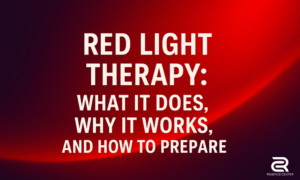WHAT IS RESILIENCE?
Everyone experiences ups and downs, but even when life is going well, you need to call upon resilience, which is ultimately about energy, not psychology alone.
Don’t get me wrong; there is always psychology and mindset involved. Still, the truth is, recharging and restoring the energy you need to bounce back after major energy expenditures, challenges, and setbacks or surges in productivity ensures resilience; and, ultimately, antifragility, where you can come back even stronger.
When life is not going well, you are facing excessive stress, and it’s impeding energy production and flow; it’s the same; to cultivate resilience, bounce back and have enough energy to meet all your needs, you’ve got to increase your power proactively.
How you go about doing that is what I’m talking about in this e-book.
RESILIENCE HAS MANY DEFINITIONS. A COMMON DEFINITION IS:
“Resilience is a measure of an organism’s ability to adapt and withstand challenges to its stability.
When challenges come along, how well we adapt depends on the vital life force we’ve got at our disposal.
Resilience is a complex interaction of:
- Genetics: the properties or features of an organism, characteristics, etc.,
- Epigenetics: the study of how your behaviors and environment can cause changes that affect the way your genes work
- Vital energy is the electromagnetic energy stored in your cells, which is the most important.
Increasing vital energy is a high-leverage factor.
- Physical condition: How efficient your body is at generating and regenerating energy.
- Psychology: how well you express the energy that you have.
- Other factors: Some people are more resilient than others because of their financial resources, support level, and more, but regardless of these other factors, it all starts with energy.
So, as you can see, it’s not one thing, but one thing is for sure, without energy, neither genetics nor epigenetics nor your physical or financial condition have much room to influence change.
ASPECTS OF BEING RESILIENT
There are three aspects of resilience.
– First is the ability to face and cope with life challenges.
– Second is adapting to the changes often influenced by these challenges.
– The third is the ability to recover and grow from these challenges.
The third aspect of being resilient should be #1 because it allows you to face and cope with future challenges as and when they appear in your life and then adapt stronger, as I discussed earlier.
The recovery, healing, or regeneration of energy is the key to all three aspects of resilience.
CONSIDER THIS SPECTRUM:
Fragile: you face a challenge and then retreat because you don’t have enough energy to meet the challenge with stability.
Resilient: you have enough energy to adapt.
When adaptation energy (energy reserve) is low, a person is more likely to suffer from stress-related diseases and conditions known as rundown or burnout.
When adaptive energy is high, or you know how to recover such energy proactively, you can bind back and adapt to, change, or eliminate the stress.
When you are resilient and living your best Self, is your energy high or low?
You know the answer.
Antifragile: Ultimately, you want to have periods where you get stronger because you have excess adaptive energy over and beyond your daily needs. When you face challenges, you cannot only meet them but adapt and get even stronger because of the challenge.
Like lifting a weight just outside your capacity, you can adapt to and conquer the weight. But with, first and foremost, the vital energy to adjust and resilience, antifragility is a pipe dream.
So, for your body and brain to bounce back, you’ve got to learn what vital energy is and how to recharge and restore your body’s battery, then learn how to manage that energy like a pro in a healthy performance lifestyle.
Click the link below for the 5 secrets PDF authored by Regenus Center founder John Allen Mollenhauer, Performance Lifestyle Coach JAM.





